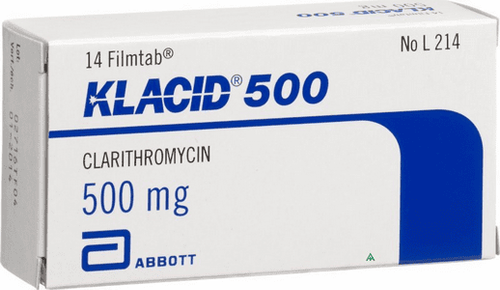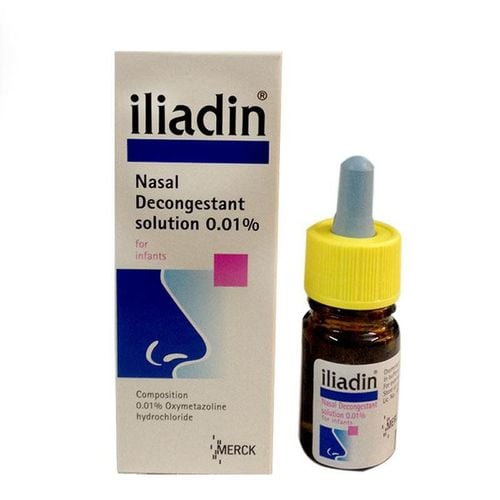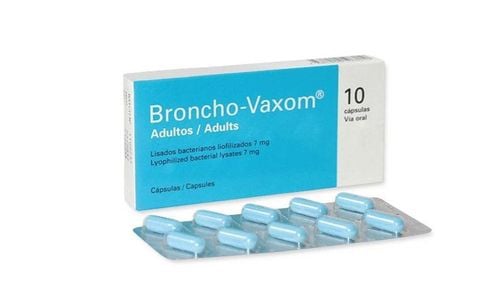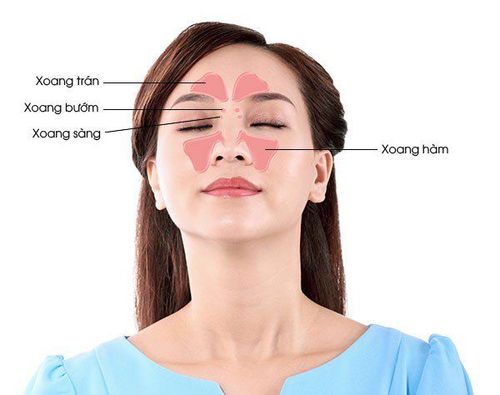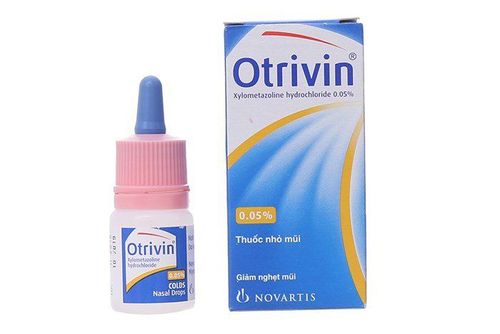This article was professionally consulted by Dr. Nguyen Van Thai - an ENT (Ear, Nose & Throat) specialist - Department of ENT and Head and Neck Surgery - Vinmec Da Nang International General Hospital.
A stuffy nose and pressure on the cheekbones are often signs of acute sinusitis. Acute sinusitis, also known as acute sinusitis, is a short-term infection/inflammation or inflammation of the lining of the sinuses. This condition prevents mucus from draining out of the nose. One supportive treatment method is sinus suction, which helps clear the nasal cavity.
1. What are the symptoms of acute sinusitis?
Common symptoms of acute sinusitis are:
- Thick, yellow, or green discharge from the nose or back of the throat (post-nasal drip).
- Nasal blockage or stuffiness makes it difficult to breathe through the nasal passages.
- Pain, tenderness, swelling, and increased pressure around the eyes, cheeks, nose, or forehead are symptoms that get worse when you bend over.
- Increased pressure in your ears.
- Headache.
- Pain in your upper jaw and teeth.
- Decreased sense of smell and taste.
- Cough, which gets worse at night.
- Bad breath.
- Fatigue.
- Fever.

2. What medical techniques are used to diagnose acute sinusitis?
Your doctor will feel for increased sensation in your nose and face and examine the inside of your nose. Other methods to diagnose acute sinusitis and rule out other conditions include:
- Nasal endoscopy: Your doctor will insert a thin, flexible tube (endoscope) with a lighted fiber optic cable through your nose to visually examine the inside of your sinuses.
- Imaging tests: A CT scan or MRI can show your sinuses and nasal area details. Although not recommended for uncomplicated acute sinusitis, imaging tests can help identify abnormalities or suspected complications.
- Nasal and sinus microbiology test: This test is usually not necessary to diagnose acute sinusitis. However, when the patient does not respond to treatment and the condition worsens, bacterial culture helps determine the cause of infection.
- Allergy test: If your doctor suspects allergies cause acute sinusitis, they will order an allergy skin test. This safe and quick test helps identify allergens that trigger acute sinusitis symptoms.
3. Nasal sinus aspiration is an effective method to support the treatment of acute sinusitis
Nasal sinus aspiration is a medical method for clearing the airways. It uses medical instruments to aspirate secretions from the sinuses. Improper aspiration of sinusitis fluid can sometimes cause consequences such as headaches, dizziness, damage to the nasal mucosa, infection, and even worsening the condition.
Sinus suction at home includes these steps:
- Preparation: Use a nasal aspirator, 0.9% NaCl saline, and combined medicine when suctioning fluid.
- Patient's position: Sit or lie down, head tilted up 15 degrees.
- Aspirator's position: Sit opposite, 20cm higher than the patient, or sit next to the bed on the right side, at the patient's shoulder level. Prepare the suction tube and suction machine, set the appropriate suction pressure, and prepare nasal gauze and tissue to stop bleeding if there is an accident.
The steps:
- Step 1: For a handheld nasal aspirator, gently squeeze the bottle's body and place the suction head inside the nose. Then, release the hand, squeezing the body of the bottle to suck the nasal fluid. You need to read the instructions carefully for a nasal aspirator and adjust the suction force/pressure accordingly.
- Step 2: Inject saline solution into the nose, tilt your head back, hold it in the nose for about 30 seconds, then lower your head to let the saline solution carry the remaining nasal discharge out.
- Step 3: Dry your nose with a tissue, rinse your mouth with saline solution, and clean the nasal aspirator.
Other methods of cleaning the sinuses:
- Sinus irrigation—endoscopic sinus aspiration: A needle is inserted through the nose into the sinus, and saline solution is injected to push all the pus inside and clean the sinus. This method is one of the most popular today and is very effective in treating sinusitis.
- Nasal aspiration under pressure: This method puts medicine into the sinus and is often used for people with chronic sinusitis. Depending on the patient's condition, the treatment course includes many times.
Necessary notes:
- Keep the nasal aspirator clean and disinfect your hands when performing it. Do not overuse nasal aspiration.
- Some cases require guidance from a specialist.
- Sinus suction is just one of the ways to relieve symptoms, but it cannot completely cure sinusitis. The risks of not sucking it right can cause pain and damage to the nose.
Sinusitis is a common disease in countries with tropical monsoon climates like ours. When suffering from acute sinusitis, it is necessary to be examined and advised by ENT doctors for appropriate treatment to avoid progression to chronic sinusitis.

ENT Department - Vinmec International General Hospital is an address specializing in examining and treating sinusitis as well as common ENT diseases, tumors in the head and neck area, congenital malformations in the ENT area using common surgical methods such as surgery, tympanoplasty through microscope or endoscopy, fistula removal surgery, Bondy surgery, nasal nasopharyngeal aerosol, nasal turbinate injection, nasal turbinate cauterization... with a modern Karl Storz sinus endoscope system, computed tomography (CT Scan) with a 640-slice CT Scan machine for early and accurate diagnosis.
To arrange an appointment, please call HOTLINE or make your reservation directly HERE. You may also download the MyVinmec app to schedule appointments faster and manage your reservations more conveniently.

